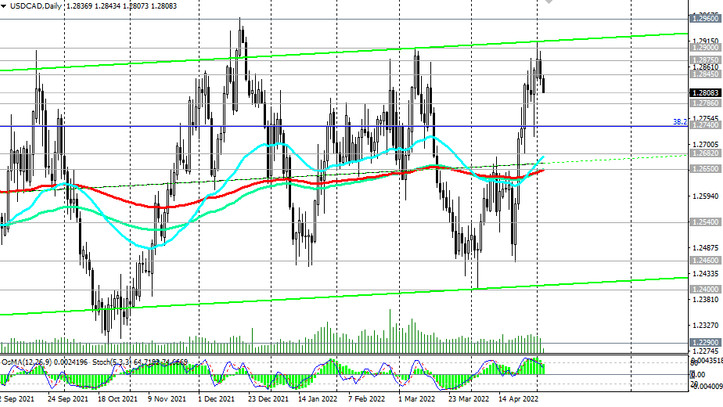The US dollar is weakening today, and the DXY dollar index is declining. At the time of writing, the DXY index was near 103.43, 51 points below the local 2-year high of 103.94 hit last week and 6 points below the previous day's close.
And yet, we can say that this is so far only a slight correction of the dollar. Most likely, it will continue to grow, especially if today the Fed leaders announce a tougher position on the monetary policy of the US central bank.
As you know, today at 18:00 (GMT) the Fed's interest rate decision will be published, and this is the key event of today. It is widely expected that the rate will be raised by 0.50%, to 1.00%. Market participants are also waiting for the leadership of the US central bank to announce a quantitative tightening program and determine the timing of the start of the reduction of Fed's balance sheet, which is about $ 9 trillion.
At the same time, the expected 0.50% interest rate hike today is already priced in. Market participants betting on the further growth of the dollar, expect to hear from the Fed hard signals confirming its intention to accelerate the increase in interest rates. Investors are already quoting the Fed's key rate hike by another 2% over the next four months.
In the meantime, the US dollar is declining. Especially noticeable is its downward dynamics (which we still refer to as a correction) against the Canadian and Australian dollars, which, in turn, receive strong support from rising energy prices.
In particular, oil prices jumped after the American Petroleum Institute (API) on Tuesday announced a significant reduction in oil inventories in the reporting week. Brent oil futures have recently risen in price by about 3% to $108.30 a barrel at the moment. These data, as well as the plans of the European Union to impose a ban on the import of Russian oil, contribute to an increase in oil prices, oil market analysts say.
Against this background, the Canadian dollar is strengthening in the market.
As reported at the end of last month in the National Bureau of Statistics of Canada, the consumer price index (CPI) in March rose in the country by 6.7% (in annual terms) after rising by 5.7% in February, which also turned out to be stronger than the forecast for growth by 6.1%. Thus, annual inflation in Canada accelerated in March, reaching a new maximum level over the past 30 years. On a monthly basis, CPI rose 1.4%, also the highest since January 1991.
The April meeting of the Bank of Canada ended with an interest rate hike of 0.50% (to 1.0%), which turned out to be a positive factor for the CAD, which, by the way, is included in the basket of 6 major currencies of the DXY dollar index, amounting to approximately 9.1% (the euro accounts for 57.6%).
“Surges in the prices of oil, natural gas and other commodities are driving inflation around the world. Supply disruptions … are also further exacerbating current problems and reducing business activity. These factors are key in the context of the upward revision of the Central Bank’s inflation forecast,” they said at the Bank of Canada, adding that "in view of the excess demand emerging in the economy and inflation remaining well above the target, the Council decided that it is necessary to continue raising interest rates", although the timing and pace of further interest rate hikes will depend on incoming economic data.
Thus, the monetary policy parameters of the Bank of Canada run almost in parallel with the monetary policy parameters of the Fed. At the same time, inflation in Canada is still less than in the US, and rising oil prices provide strong support to the quotes of the Canadian currency.






